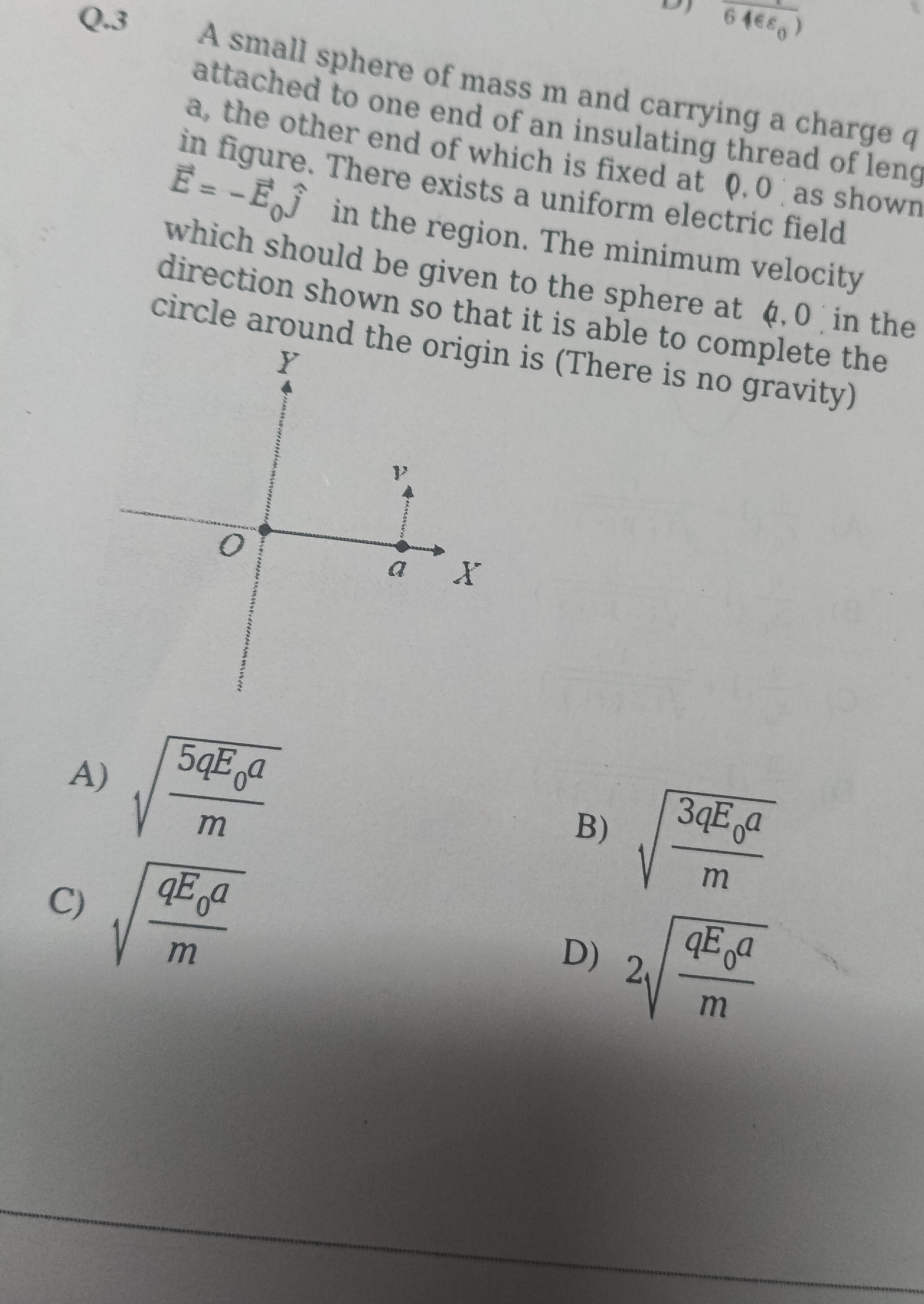Question
Question: A small sphere of mass m and carrying a charge q attached to one end of an insulating thread of leng...
A small sphere of mass m and carrying a charge q attached to one end of an insulating thread of length a, the other end of which is fixed at 0.0 as shown in figure. There exists a uniform electric field E=−E0j^ in the region. The minimum velocity which should be given to the sphere at 4.0 in the direction shown so that it is able to complete the circle around the origin is (There is no gravity)

m5qE0a
m3qE0a
mqE0a
2mqE0a
m5qE0a
Solution
Solution:
-
Identify Effective “Gravity”:
E=−E0j^.
The electric field is given byA particle with charge q experiences a force
F=qE=−qE0j^.This force acts like gravity with effective acceleration
geff=mqE0. -
Energy Considerations for Circular Motion:
amvtop2=mgeff⟹vtop2=geffa=mqE0a.
In a pendulum (or circular motion) problem, if you give an initial speed at the lowest point, to complete the circle the speed at the highest point must be at least such that the tension is zero. At the top, the minimal condition is that the required centripetal force is provided solely by the effective weight: -
Energy Conservation from Bottom to Top:
KEbottom=21mvmin2,
Let the kinetic energy at the bottom beand at the top, the sphere gains potential energy. For a circular path of radius a, the vertical height difference between the bottom and the top is 2a so that
PEtop=mgeff(2a)=2amqE0m=2qE0a.Also, the kinetic energy at the top must be at least
KEtop=21mvtop2=21m(mqE0a)=2qE0a.So by conservation of energy:
21mvmin2=2qE0a+2qE0a=25qE0a. -
Solving for vmin:
vmin2=m5qE0a⟹vmin=m5qE0a.
Thus, the minimum velocity is
m5qE0a.Brief Explanation:
- Replace gravity with the effective acceleration geff=mqE0.
- At the top, minimal speed is geffa.
- Use energy conservation: difference in potential energy =2qE0a plus kinetic energy at top 2qE0a equals kinetic energy at the bottom.
- Solve to get vmin=m5qE0a.
